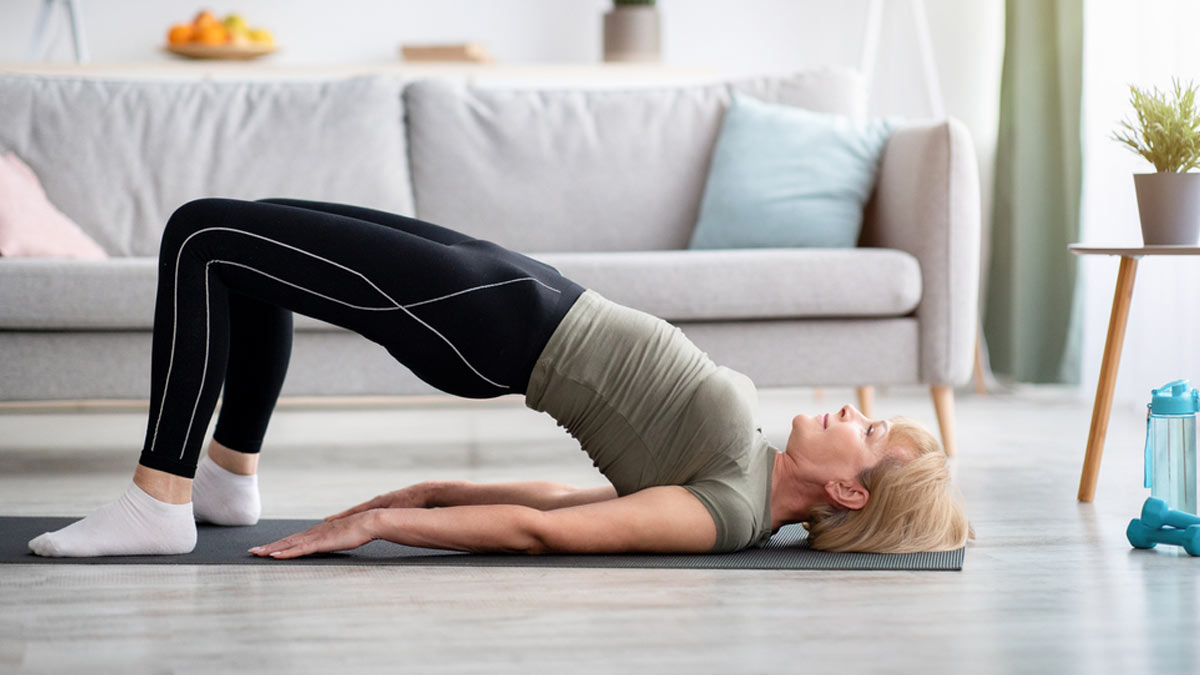
The spine is the backbone of our body, quite literally. It supports the weight of the body, allows us to stand upright, and provides the flexibility necessary for movement. A flexible and strong spine helps us in maintaining a proper posture which reduces the risk of developing chronic pain in lower back, neck and shoulder. Spine also houses our nervous system and thus keeping it healthy and strong is of utmost importance. Yoga, being the ancient Indian practice and as solution to several mind and body problems, is an excellent tool for maintaining spinal health.
Table of Content:-
Yoga asanas like Bhujangasan (cobra pose) and Setu Bandhasana (bridge pose) focus on stretching and building spinal strength. Thus these two asanas are crucial for maintaining your spine. To understand more about these poses and spinal alignment, OnlyMyHealth interacted with Himalayan Siddhaa Akshar, Author, Columnist, Founder: Akshar Yoga Kendraa, Indian, Yoga and Spiritual Leader, Bengaluru.
Yoga Guru Akshar said, “Among the numerous asanas, Bhujangasana (Cobra Pose) and Setu Bandhasana (Bridge Pose) are two powerful postures that specifically target the flexibility and strength of the spine.”
Bhujangasana (Cobra Pose)

Bhujangasana, also known as the Cobra Pose, is a backbending asana that primarily focuses on stretching and strengthening the muscles of the back, abdomen, and shoulders. This pose is particularly beneficial for improving spinal flexibility and mobility.
Explaining how to practise this asana, Akshar said, “To perform Bhujangasana, you begin by lying on your stomach, with your legs extended and feet together. Place your palms flat on the floor, near your chest. Inhale deeply, and as you exhale, gently lift your upper body off the floor, arching your back and drawing your shoulder blades together. Keep your elbows close to your body and your gaze forward or slightly upward. Hold the pose for several breaths, engaging your back muscles and feeling the gentle stretch along your spine.”
“Regular practice of Bhujangasana can help alleviate back pain, improve posture, and increase spinal mobility. It also strengthens the muscles of the back, shoulders, and arms, promoting overall upper body strength and flexibility. Additionally, this pose is believed to stimulate the digestive system and improve respiratory function,” he said while explaining the importance and benefits of the asana.
Also read: Bend Your Body, Strengthen Your Health: Yoga Asanas to Reduce Stroke Risk
Setu Bandhasana (Bridge Pose)

Setu Bandhasana, or the Bridge Pose, is a gentle backbend that targets the spine, hips, and shoulders. This pose is particularly beneficial for improving spinal flexibility and strengthening the back muscles.
“To enter Setu Bandhasana, lie on your back with your knees bent and feet flat on the floor, hip-width apart. Place your arms beside your body, palms facing down. Engage your core muscles and press your feet firmly into the ground. On an exhalation, lift your hips off the floor, creating a straight line from your knees to your shoulders. Engage your glutes and back muscles to support the lift. Hold the pose for several breaths, focusing on your breathing and the stretch along your spine,” Akshar said.
According to him, regular practice of Setu Bandhasana can help improve spinal flexibility and mobility, alleviate back pain, and reduce stress and anxiety. It also stretches the chest, neck, and hip muscles, promoting overall flexibility and reducing the risk of injury. Additionally, this pose is believed to stimulate the thyroid gland and improve circulation.
Also read: Yoga For Health: How These Simple Yoga Poses Can Bring Down Your Blood Pressure
Both Bhujangasana and Setu Bandhasana are excellent choices for those seeking to enhance spinal flexibility and strength. However, Akshar recommended that it is essential to practise these asanas with proper alignment and under the guidance of a qualified yoga instructor, especially if you have any pre-existing injuries or health conditions.
Remember, yoga is a holistic practice that encompasses not only physical postures but also breath control, meditation, and mindfulness. By incorporating these asanas into your regular practice, you can experience the numerous benefits of increased spinal flexibility and strength, contributing to overall well-being and a balanced lifestyle.
Also watch this video
How we keep this article up to date:
We work with experts and keep a close eye on the latest in health and wellness. Whenever there is a new research or helpful information, we update our articles with accurate and useful advice.
Current Version
